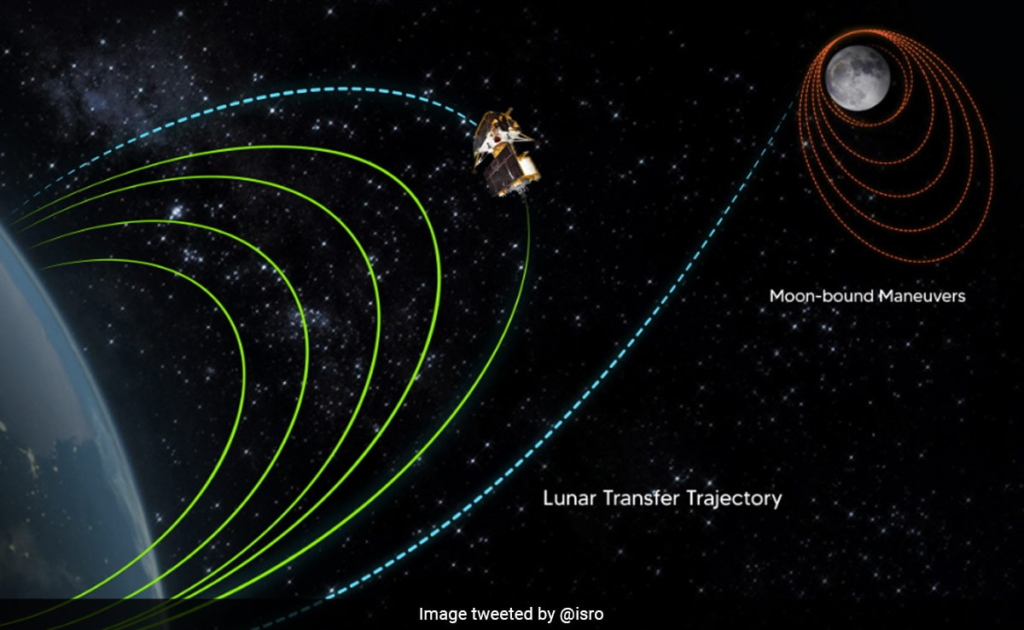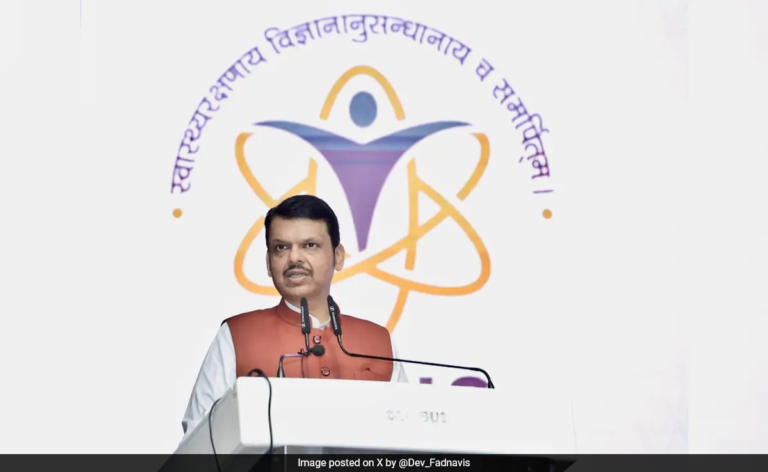

Chandrayaan-3 was launched into space by the LVM3 rocket in Sriharikota on July 14.
New Delhi:
Chandrayaan-3’s lander Vikram is scheduled to separate from the spacecraft’s propulsion module today. The lander and rover, Pragyaan, are expected to land on the Moon on August 23. Once on the Moon, the lander Vikram will photograph the Pragyaan rover, which will deploy its instruments to study seismic activity on the lunar surface.
India’s ambitious moon mission Chandrayaan-3 successfully completed its fifth and final lunar-bound orbit maneuver yesterday, bringing its spacecraft even closer to the surface of the Moon.
Having completed all of its lunar-bound maneuvers, the spacecraft will now prepare to separate the lander Vikram from the propulsion module.
“Today’s successful firing, needed for a short duration, has put Chandrayaan-3 into an orbit of 153 km x 163 km, as intended. With this, the lunar-bound manoeuvres are completed. It’s time for preparations as the Propulsion Module and the Lander Module gear up for their separate journeys,” ISRO wrote on X, formerly known as Twitter.
Chandrayaan-3 Mission:
Today’s successful firing, needed for a short duration, has put Chandrayaan-3 into an orbit of 153 km x 163 km, as intended.
With this, the lunar bound maneuvres are completed.
It’s time for preparations as the Propulsion Module and the Lander Module… pic.twitter.com/0Iwi8GrgVR
— ISRO (@isro) August 16, 2023
Chandrayaan-3 was launched into space by the LVM3 rocket from the Satish Dhawan Space Centre in Sriharikota on July 14. The spacecraft entered lunar orbit on August 5 and is expected to land on the Moon on August 23.
Yesterday, ISRO successfully placed the Chandrayaan-3 spacecraft into a circular orbit of 153 kilometers by 163 kilometers around the Moon, completing all lunar-bound maneuvers.
After the lander Vikram separates from the spacecraft, the propulsion module will continue its journey in the same orbit. Then on August 23, the lander Vikram will attempt a soft landing on the Moon’s surface.
The lander Vikram will photograph the rover Pragyaan which will use its laser beams to melt a piece of the lunar surface, called regolith, and analyse the gases emitted in the process.
(This news is published through a syndicated feed courtesy NDTV)



